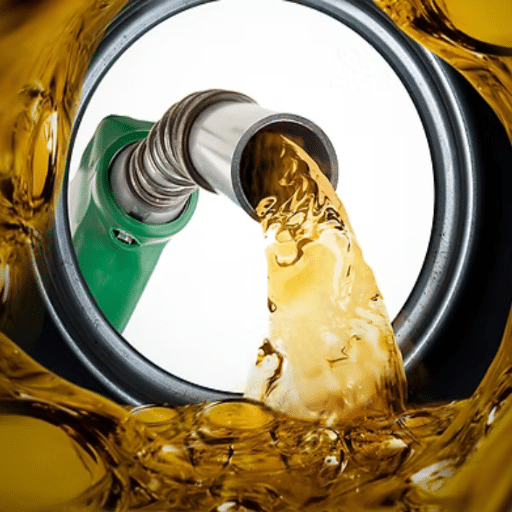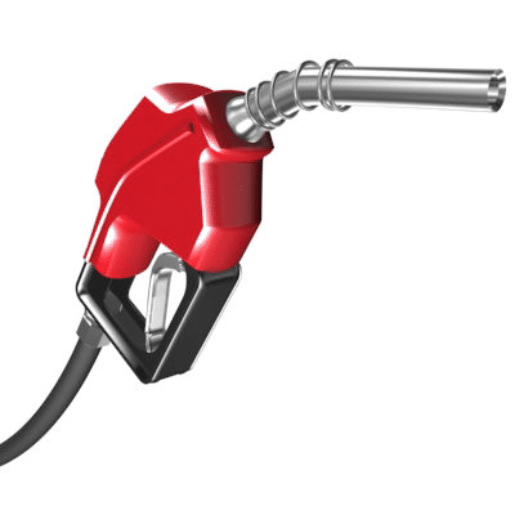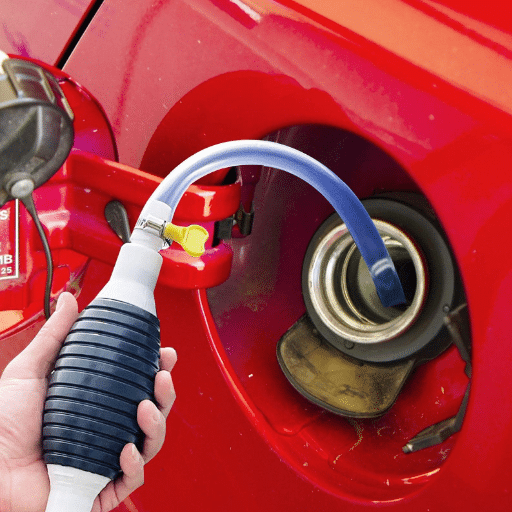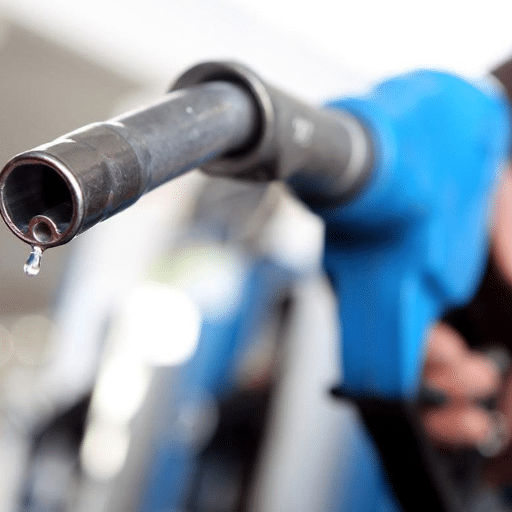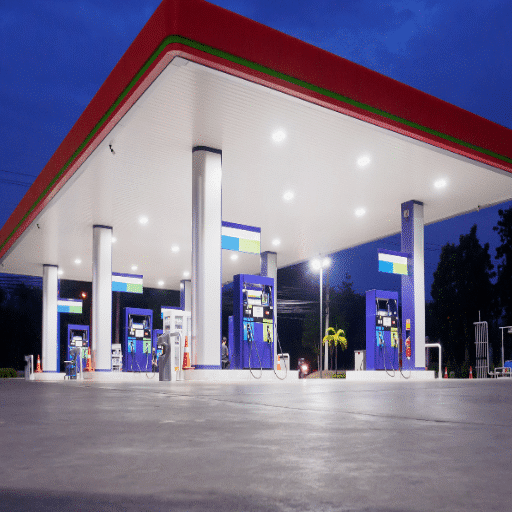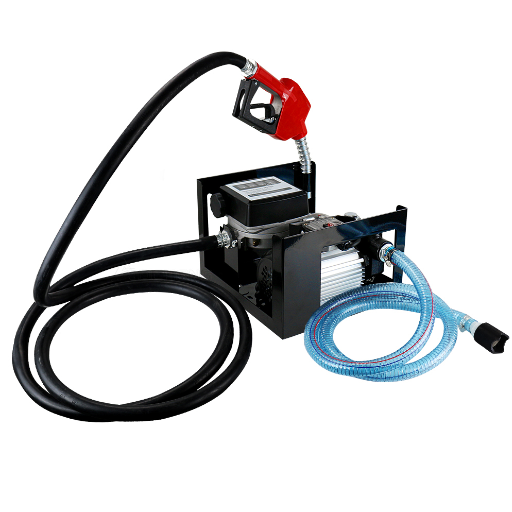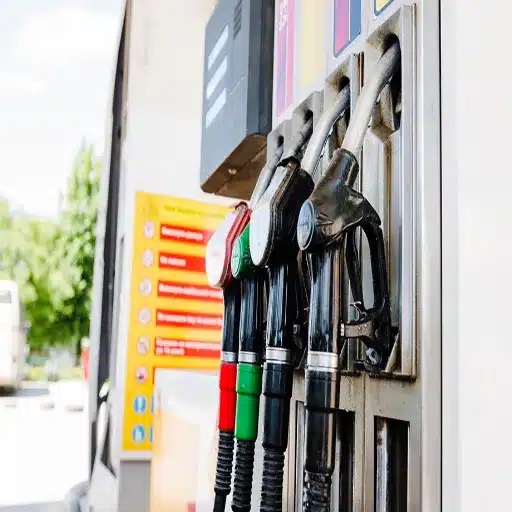The change in shape of gas stations is quickly changing how we think about fueling and convenience in our everyday lives. No longer simply a pit stop for petrol, modern gas stations are changing into convenience centres to service the needs of a fast-paced and eco-friendly world. From advanced technology and renewable energy systems to improved customer service and electric vehicle (EV) charging, these stations are the future of a more efficient and sustainable world. This article looks into the new trends in the industry and how modern gas stations are the future of smart and eco-friendly infrastructure.
Overview of Modern Gas Stations

Today’s gas stations are turning over new pages to modern motors and the environment’s call for care. Their new gas stations make use of solar panels along with LED lights to help reduce their ecological footprint. A growing number of electric vehicles (EVs) has necessitated a multitude of stations to supply EV charging points. As with convenience, fresh food and quick payment—along with even mobile application-based payment—are being looked into, to the delight of the consumers. The above description modules modern gas stations, displaying cooperative fuel, and care for the environment along with the consumer.
Definition and Features of a Modern Gas Station
The word “refuel” can mean either to fuel a vehicle after a short break or to provide it with fuel after a longer stop, the second of which is important to motorists. In the case of the petrol stations of today, the meaning of the word “refuel” is expanding to encompass not only vehicles but also other aspects of life. Nowadays, drivers do not travel with vehicles or boats only. They have people to take care of with other basic life essentials. Today’s stations cater to such needs and provide refuelling to fetch other essentials while customers await their vehicles being refuelled.
Alternative Energy Integration: One of the most important features of modern-day gas stations is the provision of alternative energy. Modern gas stations do not just provide fuel for vehicles with internal combustion engines; they also offer charging for electric vehicles along with fast chargers for high-traffic stations, which can fuel an electric vehicle in 20 to 30 minutes.
30%
With such developments, the global industry reports show the rise of electric vehicles, which are expected to constitute more than 30% of all new car sales by 2030. With such a development in demand, fuel stations are evolving to become energy stations where they not only sell petrol and diesel but also offer electric vehicle charging, hydrogen fuel, and even solar and wind energy from renewables. Some stations operate fully on sustainable energy.
Technological Integration: Modern gas stations are also defined by technological advancements. Integrated mobile applications provide the ability for customers to find stations, pay for fuel in advance, and join loyalty programs in a single-step process. Fuel payments can also be made using contactless payment cards, digital wallets, and even payments by smartphone, speeding up the transaction and making it more convenient. Furthermore, real-time data such as fuel level status and predictive maintenance can now be monitored remotely and in real-time through IoT technology, which also improves operational efficiency and reliability.
In order to define sustainability, many modern stations implement designs that include energy efficiency using LED lighting, solar panels, and rainwater harvesting systems. With the same eco-friendly initiatives, some brands have launched carbon offset programs that allow customers to donate to tree planting and other similar initiatives during their visit.
Moreover, there is an increasing focus on customer-centric services and amenities. Freshly prepared food and beverages, groceries, and even co-working spaces in some metropolitan areas are now provided by the attendants. The merging of gas stations and retail stores has given rise to lifestyle centres, which are unlike the earlier gas stations in that they offer an array of services and products under one roof.
Modern fuel stations combine advanced technology, eco-friendly initiatives, and customer-friendly services, thus carving a new niche for themselves in the fuel and energy industry. These improvements are indicative of the larger transformations towards a more resource-friendly, highly efficient, and consumer technology-friendly world.
Importance of Design and Layout in Fuel Stations
In the contemporary setting of fuel stations, there are various activities that require the attention of the customers. In order to ensure that all the other activities do not hamper fueling, a well-thought-out layout of fuel stations is necessary. A properly laid-out station facilitates the smooth movement of vehicles and amplifies customer satisfaction. It is imperative that customers should not face any obstacles, and their way should be completely unobstructed.
50%
As per consumer behavior studies, more than 50% of drivers opt for stations that provide easy access, proper signage, and simple navigation.
Moreover, safety features like the strategic placement of fuel pumps, fire-suppression mechanisms, and visibility of emergency routes are crucial in minimizing risks to customers and employees. Meeting the requirements for modern consumer expectations, eco-friendly designs that utilize elements like solar lighting or energy-efficient lighting demonstrate corporate responsibility. Additionally, modern designs incorporate large convenience stores, EV charging, and other service areas that address modern consumer needs and redefine fuel stations as service centers.
Properly incorporating modern technology and paying attention to ergonomics, fuel stations can more effectively compete for customers and encourage loyalty.
Technological Advancements in Gas Stations
There are new ways to pay being integrated into fuel stations, such as digital payment systems, mobile applications, and contactless card readers. Customers can also use cryptocurrencies to pay for fuel. These modern payment methods have made it easier for customers to pay, and transaction time has been reduced. There are also new developments in gasoline stations aimed at electric vehicle (EV) charging. New EV chargers are designed to be ultra-fast and can charge 80% of the battery in less than 30 minutes.
40%
Current data also shows that due to the popularity of EV cars, the number of EV chargers has increased by over 40% worldwide.
AI and Automation Revolution: The use of AI and automation is reshaping fuel station operations. The use of smart sensors on fuel pumps now enables better fuel delivery, inventory management, and fuel supply, minimizing fuel waste and ensuring availability. In addition, AI data analytics tools are now available on many platforms, and they simplify the prediction of customer behaviour, which helps fuel stations offer appropriate services, deals, and products for specific geographic areas.
Moreover, smart kiosks and digital signage have made it possible for stations to share personalized offers, provide guidance, and give navigation help, as well as weather information. The fuel stations not only improve the customers’ experience, but also improve the fuel stations’ operators’ income with these advancements.
Pricing Strategies in Modern Gas Stations
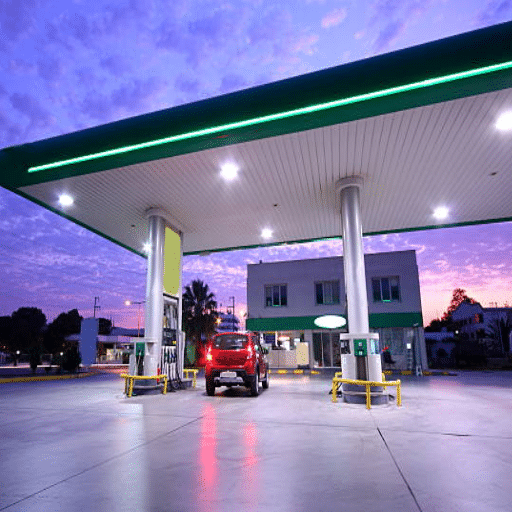
In order to enhance their competitiveness and profitability, modern gas stations employ a wide range of pricing techniques. One gas station pricing technique is dynamic pricing, in which the price of the fuel is set in response to demand, competitor pricing, and market changes. Another widely used incentive is loyalty programmes, which either provide discounts or some form of reward to ensure that the customers return. In addition, offering bundled fuel purchases together with in-store promotions on items like snacks and beverages serves to attract more buyers and augment sales. Gas stations are able to fulfill market demands and nurture customer loyalty simultaneously by implementing balanced competitive pricing and incentives.
Factors Influencing Fuel Prices
Fuel price is a direct output of global, regional, and local factors. As earlier noted, crude oil price is a primary influence on fuel price at retail outlets. The price of crude oil itself is very dynamic, and it is influenced by supply and demand, geopolitical issues, natural disasters, and production shifts from key oil-exporting countries. A pertinent example would be OPEC. For instance, decreases in oil production due to sanctions or hurricanes tend to have a significant effect on the global supply.
Key Price Influencing Factors:
- Crude Oil Prices: Primary influence on retail fuel costs, affected by global supply and demand
- Refining Costs: Expenses associated with converting crude oil into usable gasoline and other fuels
- Seasonal Demand: Price increases during summer months due to vacation travel and higher consumption
- Government Taxes: Federal and state taxes significantly impact final consumer prices
- Distribution and Marketing: Transportation costs from refineries to retail locations
- Market Competition: Local competition levels affecting pricing strategies
Refining costs represent another important set of components. These include costs associated with turning crude into gasoline and other fuels of use. Seasonal demand impacts also matter; for instance, prices tend to increase in the summer months, and this is associated with vacation travel and higher fuel consumption.
| Tax Type | Range | Example State |
|---|---|---|
| Federal Fuel Tax | $0.18 per gallon | Nationwide |
| State Fuel Tax (Low) | $0.14 per gallon | Alaska |
| State Fuel Tax (High) | Over $0.60 per gallon | California |
Fuel costs are significantly impacted by the taxes that federal and state governments enact. Fuel taxes in the United States can range from $0.18 in federal fuel taxes to taxes at the state level that can range from $0.14 to over $0.60 per gallon in contemporary statistics. As an example, California not only has a high fuel tax but also has some of the highest fuel taxes, which worsen the costs that consumers face.
Distribution and marketing costs are other considerations. Additional fees are incurred when moving fuel from refineries to distribution centers and then on to retail stores. Regional access, infrastructure, and the use of pipelines, as well as trucks or even ships, all play a role in this. Stores in more distant areas typically face steeper transportation fees, which leads to higher prices.
Market competition also plays a role in defining the price. Fuel stations in high population density areas with a lot of competition may reduce prices in an attempt to gain customers. On the other hand, businesses in areas with less competition may charge more for fuel. Appreciating these factors and their impacts on one another makes it easier to understand why fuel prices are not only different over time but also in different places.
Competitive Pricing Models
Fuel prices are often affected by several factors such as demand, local production, local competition, and regional supply. Several companies adapt them to stay relevant and to maximize profits as well. An example of this would be the use of dynamic pricing strategies. This is where the price is subject to change based on how the supply and demand are. It is a well-known fact that fuel prices increase during peak travel periods such as holidays and summer in an attempt to make use of the increased demand for fuel.
Moreover, as indicated by regional information, the closeness to refineries or significant distribution centers can affect pricing. For example, such locations tend to have lower prices because of diminished shipping charges. A case in point would be the Gulf Coast, which is an energy production center. As a result, fuel prices in the region tend to be lower than the national average.
Loyalty Program Impact: Many gas stations adopting loyalty programs to stay competitive is one of the main insights regarding competitive pricing strategy. To ensure they gain repeated business from their customers, many businesses adopt loyalty programs that offer discounts or points. A recent study shows that such gas station incentives influence more than 70% of customers.
Attempting to keep their edge in the marketplace, companies are adopting these pricing models, attempting to secure customers and control operational costs, fuel retail being no exception.
Customer Perception of Fuel Prices
Customer perception of fuel prices is influenced by the overall economy and pricing strategies in their area. Crude oil prices and their effect on fuel costs are a major influence. Taxes, transportation fees, and gas station competition in the region also impact pricing differences.
Consumers weigh fuel prices most heavily during the purchase decision and engage actively in price comparisons between nearby stations to determine the best option. Price transparency and clarity are also important indicators of trust and loyalty. An example is the more favorable consumer perception of fuel stations with digital price boards or simple‐to‐obtain pricing information. Additionally, the perception of price is shaped by factors such as loyalty or discount pricing programs, as described earlier.
This information is vital to companies if they want to craft effective marketing strategies that foster competitiveness and improve customer relations.
Understanding Customer Needs at Gas Stations

At gas stations, customers mostly appreciate hassle-free access, reasonable pricing, and the overall quality of service. For instance, a simple approach to fuel pumps, unambiguous direction boards, and swift payment systems contributes to a better user experience. Properly maintained and easily accessible restrooms, a replenished convenience store, and the polite assistance of staff are some of the additional services that many look for and value. Fuel discounts and loyalty programmes go a long way in motivating customers to revisit. Fulfilling the above expectations works as a basic criterion for customer satisfaction and fuels brand loyalty.
Customer Service and Experience in Fuel Stations
In the wake of technological progress, fuel stations are now incorporating new technologies to enhance customer service and experience. Many fuel stations feature mobile applications that not only allow contactless payments but also monitor fuel consumption and display current fuel prices.
60%
Modern statistics have shown that almost 60% of clients wish to make use of digital payment methods at fuel stations, given their ease and speed of use. Also, automation is contributing a lot towards optimizing processes. Through automation, self-service kiosks are being enabled, which allow customers to finish transactions swiftly on their own which cutting down on queues. Smart fuel level sensors and IoT devices which fuel level monitoring, maintenance prediction, and fuel level downtime prevention are also being adopted for more effective fuel service.
The installation of Electric Vehicle (EV) charging stations presents another trend. Studies have shown that the global EV market will have over 30% of the vehicle sales by 2030. In that case, the availability of charging points will become important in the attraction of environmentally conscious consumers.
More advanced customer feedback mechanisms are being introduced, which are beneficial to gas station operators. These include customer experience surveys, app reviews, and touch-screen display systems. Through these and other mechanisms, operators can better personalise services and quickly address problems. Taking advantage of such feedback mechanisms places fuel stations in a better position to compete and satisfy diverse customer expectations.
Brand Loyalty and Fuel Providers
Fuel retailers are now primarily focusing on building brand loyalty as fuel retailers seek to maintain a competitive edge as the market grows. Research indicates that more than 60% of customers fuel their vehicles at stations with fuel loyalty programs. They include fueling discounts and rewards, and exclusive offers targeted at the customers. As opposed to restraining customers from collecting fuel points, Shell, Chevron, and BP have taken the initiative to develop app-based rewards systems, so that clients can conveniently collect points and convert them into fuel savings or convenience store discounts.
75%
Besides this, fuel stations’ customer loyalty is heavily dependent on their customer service. In 2023, a study showed that more than three-quarters of fuel station clients stated that they would be more inclined to visit fuel stations that had nice restrooms, staff readiness and friendliness, stations that were spotless, and the availability of convenience store products and air pumps. Retaining customers who are knowledgeable about modern technology is made easier by the deployment of mobile checkouts and contactless payment methods.
An increasingly competitive sector like fuel retail requires brand trust and fuel station shoppers’ loyalty, so fuel retailers must understand modern shopper demands and improve retailer and fuel retailer shopping experience. Fuel retailers in this sector can form long-term client relations and trust.
Additional Services Offered to Customers
In modern times, fuel providers are attempting to meet consumer demands by offering an EV charging station in place of the conventional fuel convenience store. As the number of electric vehicles on the road increases, fuel stations offering electric vehicle charging gain popularity.
26,500
70%
To put it into perspective, there are over 26,500 EV charging stations across the United States now, and with government funding for public charging, we can only expect the number to go higher.
Moreover, we see fuel stations and stores partnering to run exclusive, personalized reward programs. It’s proven that fuel stations with loyalty reward programs are 70% more likely to see returning customers, which increases the retention rate and average spend per customer. Such schemes frequently feature fuel discounts, car wash freebies, or point-based rewards that can be used to shop for other items.
Also, with the addition of pick-up meals and food service being offered at many fuel stations, various fuel stations are partnering with popular fast-food outlets for gourmet grab-and-go meals. Fuel stations with food offerings have been found to encourage consumers to lengthen their stay and increase incidental purchases. This convenience serves to improve the overall customer experience and satisfaction, as fuel stations traditionally served travellers with food and fuel, but are now evolving.
In addition, well-maintained restrooms, safe lighting, and round-the-clock surveillance are some of the features that continue to receive appreciation, which means that safety and hygiene continue to be the primary requirements. Contactless payments, mobile ordering apps, and fuel app-based payments are some of the contemporary technological tools that are helping fuel stations remain competitive and relevant in the ever-evolving market.
Building a Modern Gas Station
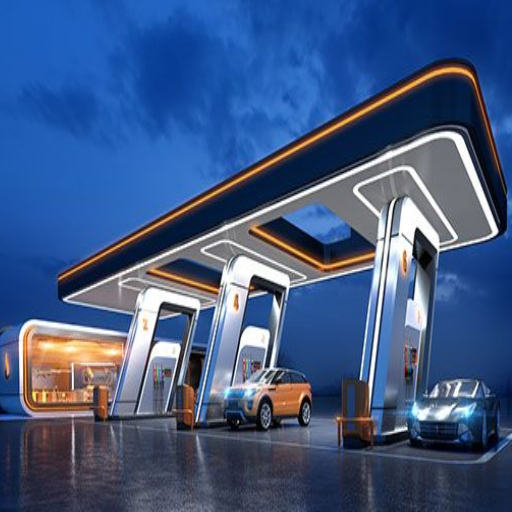
To construct a modern gas station, there are several fundamental aspects that need attention. Firstly, the layout should ensure ease of use, allowing sufficient room for vehicles and straightforward movement. The presence of modern fuel dispensers, as well as alternative fuel options like EV charging stations, not only promotes sustainability but also serves a wider range of customers. The availability of clean restrooms, a fully stocked convenience store, and grab-and-go food options adds to the comfort of patrons. Proper lighting, security cameras, and safety procedures are also required for security. Lastly, the use of mobile payment and loyalty app technologies not only streamlines operations but also improves customer relations. All of these features define the modern, fully functional gas stations of today.
Key Considerations for Station Design
Optimal Positioning
The success of a gas station largely depends on its location. Data show that stations along major roads, near highways, at busy intersections, and close to shopping malls have better business than those situated in less developed areas. Convenience and ease of access are crucial because customers like in-and-out fueling stations with little to no detours.
Environmental Sustainability
Today’s stations increasingly adopt green designs. Using solar energy, activating water recycling systems, and installing charging stations for electric vehicles (EVs) are some of the EVA-compliant features.
Customer-Centric Layout
An uncomplicated and spacious layout is critical to customer convenience and safety. Parking availability, properly marked fuel zones, and pedestrian pathways ensure that there is no overcrowding, thereby improving the customer’s experience as a whole.
Technological Integration
For service improvement, the latest technology must be implemented. Customers are increasingly appreciating advanced fueling transactions via digital and mobile app payments and preordering services. Moreover, IoT-enabled fuel management and energy use monitoring and fuel management systems, as well as service interval optimizations, make operations run smoothly.
Enhanced Amenities
Like rest areas, gas stations serve as eating and shopping points for travelers. Clean restrooms, Wi-Fi, good-quality food, and convenience stores are primary facilities that contribute to customer loyalty. It has also been noted that such outlets serving eateries enjoy enhanced sales and higher customer satisfaction ratings.
Safety and Security
The safety of both employees and customers should be evaluated. Effective lighting, advanced surveillance systems, emergency response policies, and proper zoning of combustibles all help maintain security. Well-lit and monitored stations, as backed by statistical evidence, record lower cases of theft and vandalism.
30%
As the industry reports, the demand for EVA-compliant charging stations is expected to rise by 30% every year for the next 10 years. As per research, a user-friendly layout reduces accidents and optimizes daily operations.
Through efficient design, sustainability considerations, and modern technology, a gas station can address the needs of future commuters and provide efficient, safe, and fully assisted services. All these factors guarantee success in a highly competitive landscape.
Choosing the Right Location for a Gas Station
The success of a gas station largely depends on locating it in the right place because of the essential elements of visibility, ease of access, and profitability. The traffic in the area is of primary concern. Places along highways or at major intersections with high vehicular activity tend to attract more customers.
25-30%
It is evident from statistics that gas stations around heavy traffic areas have a 25-30% higher footfall as compared to other areas.
Next is the consideration of the closeness to commercial or residential areas. Gas stations close to shopping centers or to densely populated residential areas provide residents and businesses with easy access to fuel and other products, thus ensuring steady demand. In addition, taking into account the competition in the area is very important. A place with reasonable access and lower competition makes it easier to grow the business and gain market share without constant battles over pricing.
Zoning laws and other environmental considerations impact your choice of location as well. Meeting the requirements of zoning and other government environmental rules is necessary for avoiding legal issues and is good for one’s image. For example, the laws established in most places require a certain minimum distance separating gas stations from schools and hospitals, which is a safety concern.
In the end, the evolution of GIS mapping technologies and demographic analyses enables companies to pinpoint the best sites based on consumer spending patterns, income brackets, and projected city expansions. Using this information optimally has the potential to greatly enhance the quality of decision-making, which is crucial for success in the future.
Environmental Considerations in Building
The role of the environment is heavily considered in the modern construction industry, not only to follow regulations but to nurture sustainability and reduce environmental impacts. Sustainable construction highly focuses on energy efficiency—buildings are responsible for around 40% of energy use globally, as well as 33% of greenhouse gas emissions. Mitigating the use of solar panels, wind turbines, and geothermal systems is a step in the right direction toward attaining renewable energy.
Green Building Standards: New standards such as LEED certifications set benchmarks for energy-efficient buildings, with over 100,000 projects achieving certification in recent years.
Construction is also beginning to prioritize sustainable materials. For instance, using reclaimed wood, bamboo, and low-carbon concrete not only has a low environmental impact but also helps conserve the carbon footprint of materials. Conserving water is also important; the use of systems like rainwater harvesting and greywater recycling is essential to drought-prone areas.
Urban landscaping is now being factored into designs because green roofs and vertical gardens help purify the air and balance building temperatures, thus reducing energy costs. At the same time, cutting-edge methods like AI-based climate studies and 3D printing in construction allow designers to reduce waste and make better use of materials. Collectively, the actions contribute to the construction sector’s long-term sustainability.
HO Scale Models: Walthers and Modern Gas Stations

Model Railroad Excellence: With modern fueling stations, Walthers expands their line of HO scale model kits for hobbyists with their model railroad layout projects. These kits come with authentic fuel pumps and architectural styling, including proper signage and even parking areas and convenience stores to finish the look. Walthers’ modern gas station kits are just as easy to put together as their other model kits, so they can be appreciated by hobbyists no matter their experience level. Their modern gas stations are a great addition to their contemporary urban and suburban area kits, increasing the liveliness and realism of the entire layout.
Introduction to HO Scale Models
HO scale models are unparalleled in their balance of size and detail and are the most favored in model railroading. The term “HO” translates to “Half O” and refers to the models being roughly half the size of the O scale. The HO scale is 1:87, indicating that 1 inch on the model is equal to 87 inches in reality. This scale strikes a perfect balance, allowing for fine detailing while enabling extensive layouts to be constructed in limited space.
70%
HO scale’s greatest strength lies in its adaptability, with an assortment of locomotives, rolling stock, buildings, and tabletop accessories being offered by different model railroading companies. Market data indicates that the HO scale constitutes approximately 70% of the model train market, capturing the interests of both novice and expert enthusiasts. The coexistence of products from different manufacturers promotes the uniform integration of engines, tracks, and scenic items.
Custom and inventive landscaping is also possible, thanks to the scale, which can feature intricate cityscapes, countryside farmland, and even industrial and natural areas. As for the tracks, the standard HO scale gauge is 16.5 mm (0.65 inches), ensuring cross-brand compatibility. DCC (Digital Command Control) technology has also been refined, particularly in the HO scale, allowing more trains to run concurrently, along with sound effects and other HO scale layout enhancements in realistic operations.
From fantasizing with fictional tracks to exact reproductions of railroad eras, modelers can merge imagination with the engineering offered by the HO scale. The scale’s long-standing fame is evidence that it can turn the idea of a miniature railroad into reality and is adored by a large number of hobbyists everywhere.
Walter’s Role in Modern Gas Station Models
In today’s gas stations, Walter’s job is to blend down-to-earth details with practical design. I dedicate craft structures that speak of modern architecture and technology that come with LED lighting and interactive touch. I want to create detailed miniatures that not only serve to beautify the overall model layout but also enthrall modelers with the precision and premium quality of the details.
Tips for Collecting and Displaying HO Scale Gas Stations
Use Quality Models From Well-Known Manufacturers
Begin by looking for reputable manufacturers with comprehensive HO gas station kits. Focus on kits that come with detailed finishing, sturdiness, and genuine elements like signs, pumps, and building-style finishing.
Design Your Layout Plan
Think about the context and theme of your model train layout before including a gas station. The gas station should be placed where it fits the rest of the layout, for example, beside a road or an urban center. The station should blend well with the rest of the layout.
Improve Realism With Accessories
Incorporate small elements such as vehicles, people, and even small patches of greenery into the layout to give it a more realistic feel. Items such as trash bins, light poles, and even weathering or ageing effects can add more layers of realism to the layout.
Incorporate Appropriate Lighting
Use LED lights to bring attention to the building and to simulate a real operating gas station. Lighting the pumps, inside the building, and even the signs can greatly improve the aesthetics of your miniature.
Maintain And Protect Your Collection
Keep your models in a cool, dry, and dustless place when not on display, and give them a gentle clean to preserve the fine details. Showcasing the models behind glass cases or on shelves with appropriate lighting can keep away dust and physical harm while also allowing people to appreciate your work.
Conclusion: Modern gas stations represent a significant evolution in infrastructure, combining traditional fueling services with cutting-edge technology, environmental sustainability, and enhanced customer experiences. From EV charging capabilities to AI-powered operations, these facilities are transforming into comprehensive energy and convenience hubs that meet the diverse needs of today’s consumers while preparing for a more sustainable future.
Reference Sources
“Analysis of a gas station hybridization with a solar thermal plant by using ETAP”
“Selection of Charging Station Location based on Sustainability Perspective using AHP Method”
“Axial compressor fouling detection for gas turbine-driven gas compression unit”
Frequently Asked Questions (FAQs)
Which features best describe a modern gas station?
A modern gas station is defined by a clean and contemporary design with a modern layout and wide feeding islands. Other features include gas pumps and additional facilities like a convenience store. A modern gas station is also equipped with electronic payment methods and allows for milking payment at the pumps.
How do gas prices at modern gas stations compare with the rest of the stations?
Gas prices at modern gas stations depend on the brand as well as the location. Some brands may price their fuel at a loss to draw customers, while others may price their fuel higher, along with their services and amenities. It is wise to visit multiple stations to find the best price.
What is the significance of the fuel dispenser at a modern gas station?
Fuel dispensers are an integral part of any modern gas station, serving the primary function of allowing customers to refuel their vehicles. For tractability, modern fuel dispensers have touchscreens and other digital interface systems, and for convenience, they have brand-based contactless pay systems.
Are there any additional services that modern gas station provides?
Additionally, modern gas stations are equipped with other amenities, including seating areas on the rooftop, ice vending machines, and even drive-in services for convenient access. For added vehicle care, some locations feature a small garage for minor repairs, which adds to their services for drivers.
What safety features are found in modern gas stations?
A modern gas station addresses safety considerations with the implementation of no-smoking rules, appropriate gas pump area signage, and no-slip, well-maintained sidewalks and pavements. In addition, gas stations also implement customer safety with the employment of customer service attendants who provide customer assistance and conduct safety surveillance.
In what ways does the gas station’s modern layout affect the service rendered to customers?
Having a modern layout inclusive of the cornerstone design allows for the enhancement of service to customers because space is efficiently utilized to accommodate more vehicles, as well as improve traffic circulation, together with ease of access to the fueling stations. With this simple yet effective arrangement, the unpleasant waiting for one’s turn that used to accompany fuel pumping has been eliminated, greatly improving the overall experience.
What can I expect to find in terms of products at a gas station?
As at other stations, at modern stations, snacks, drinks, and even lottery tickets are offered. What makes them stand out is the availability of fresh food, which enables them to serve the many quick meal customers.
What kind of maintenance do modern gas stations require?
To ensure that the ice machines and fuel pumps, among other equipment, are in good working condition, modern gas stations undergo maintenance on a regular basis. Inspections of fuel storage tanks by tanker truck services are also a routine matter, as is filling these tanks, so as to help customers fill their tanks at any time without any inconvenience.

